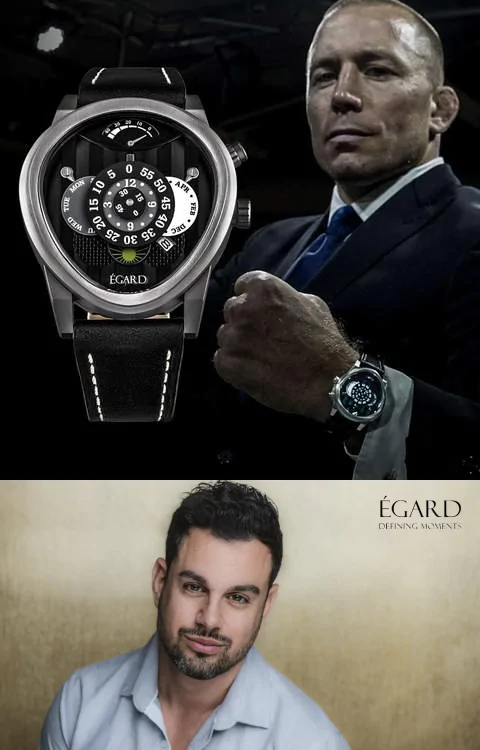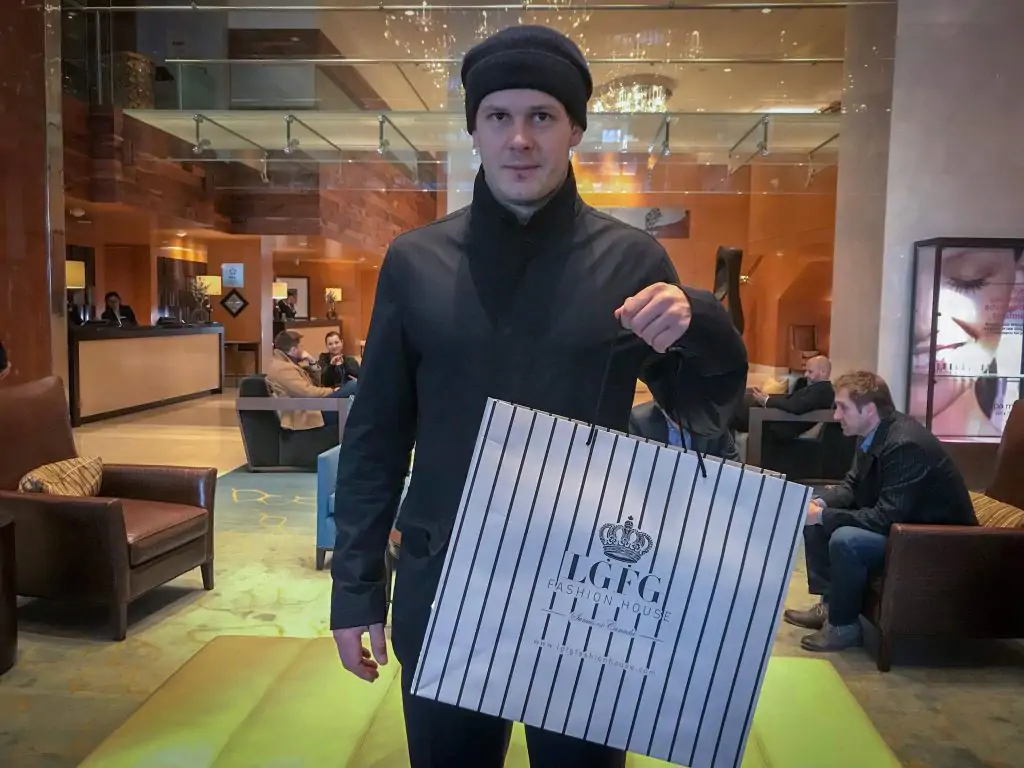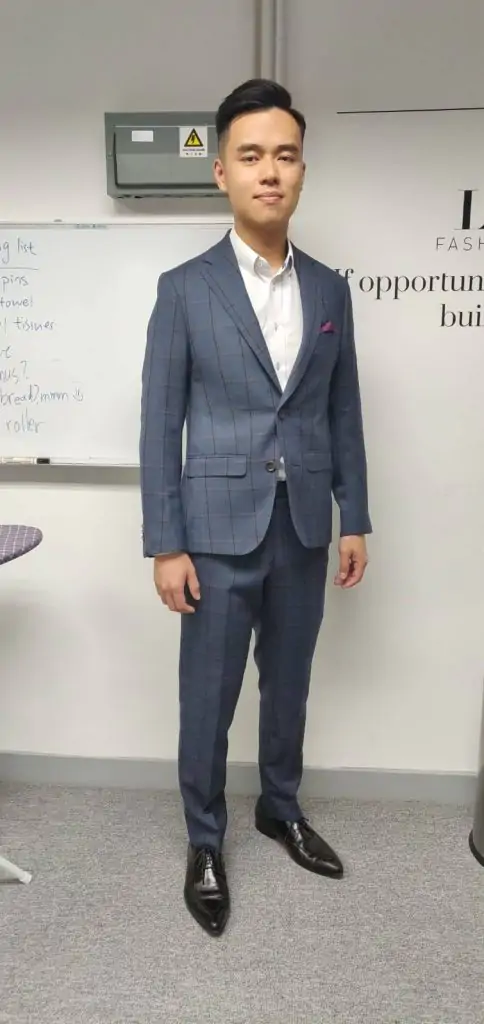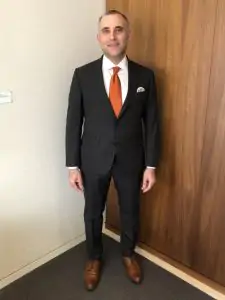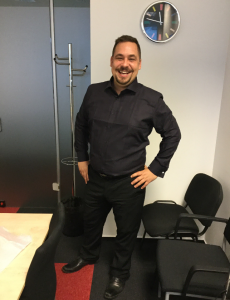“A gentleman’s choice of timepiece says as much about him as does his Saville Row suit.” – Ian Fleming
Égard luxury timepieces are unique expressions of style and prestige, built with the highest quality movements produced in Switzerland and Japan. The company was never an intention but rather manifested itself from the desire of CEO and Founder, Ilan Srulovicz to pay tribute to the bond between father and son. Not being able to find the perfect timepiece on the market that symbolized the relationship; Ilan resolved to create an inspiring luxury piece that embodied the bond’s depth of emotion. A true designer, Ilan applied his creative talent to bring forth from the realm of an idea into the physical world, the original Égard watch which debuted in 2012. The watch featured an intricate layered-dial design, so bold and unique that a company was born from the popularity. Today Égard watches boasts a spectacular lineup of timepieces adorned by some of the worlds most talented actors, athletes, and artists such as Georges St-Pierre and William Shatner.
Ilan sat down with Clarence Paller, Director of Public Relations and Corporate Partnerships for LGFG Fashion House to tell his story.
Ilan was born in Baltimore, Maryland but moved to Montreal at a young age. After high school he attended Centre Nad and Interdec College both for 3D animation. Later he returned to the United States to study at the New York Conservatory for Dramatic Arts. Not done with learning he moved back to Canada to attend the Vancouver Film School to study character animation. Keeping an open mind to possibilities coupled with the ability to step out of comfort zones allowed Ilan to grow and discover his purpose. He moved wherever his passion projects, watches being one of them would take him, including Vancouver, Atlanta, LA and Toronto.
How did you start your company and what were the challenges you faced to get your business off the ground?
Initially, I wanted to buy a watch for my father. I was looking for something that had a sapphire crystal, was waterproof, automatic, and most importantly had a layer effect. From an architectural standpoint, it had to have some kind of depth. I searched the market and at the time couldn’t find something that was affordable and unique looking that covered all the bases.
I decided to take matters into my hands and over the span of a year I ended up designing my own piece, “The Shade”.
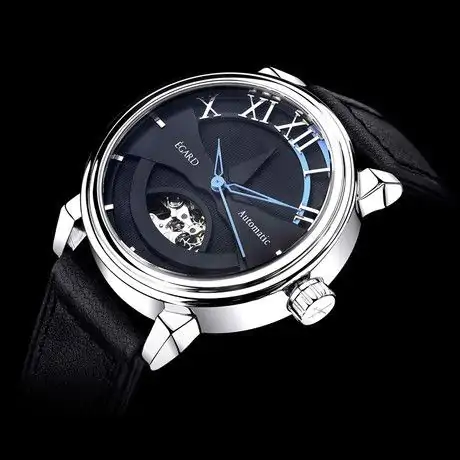
I presented the piece to my father as a symbol of the bond between us. He ended up loving it. He didn’t understand how I made it for him. He showed it to his friends and they were also taken aback.
The word about the watch spread through my father and his friends. I also went online and posted the watch on forums. It received a great reception and a lot of inquiries. The acting community was also instrumental in the popularity of the watches. My actor friends were wearing them and that is how the legendary actor, William Shatner noticed. He liked the watch so much that he wanted one too. He connected to the story behind the watches and helped me distribute it to his family and his friends. An accidental business was born.
Looking back the biggest challenge I faced getting the business off the ground, was that this business was completely foreign to me. I didn’t have anyone in my family who knew about this industry. I didn’t have any connections. I didn’t have anyone to call and ask, ‘Can I put my watches in your store?’ I may have been comfortable with design work, but I was not comfortable with marketing, business management, and manufacturing. These were all these things I had never done before. It has been eight years since the business started and I’ve made a lot of mistakes along my way. In anything in life, there is a learning curve, some steeper than others.
Who are some of the celebrities and athletes who wear your watches?
There are a lot of them, from various movies and shows, you can see them on our website, https://www.egardwatches.com/pages/whos-wearing-egard. The two celebrities who are partnered on their own line of Égard Watches are Canadians: William Shatner and George St. Pierre.
The watch we did with Shatner involved me sourcing a meteor from Alaska. This timepiece “Passages”
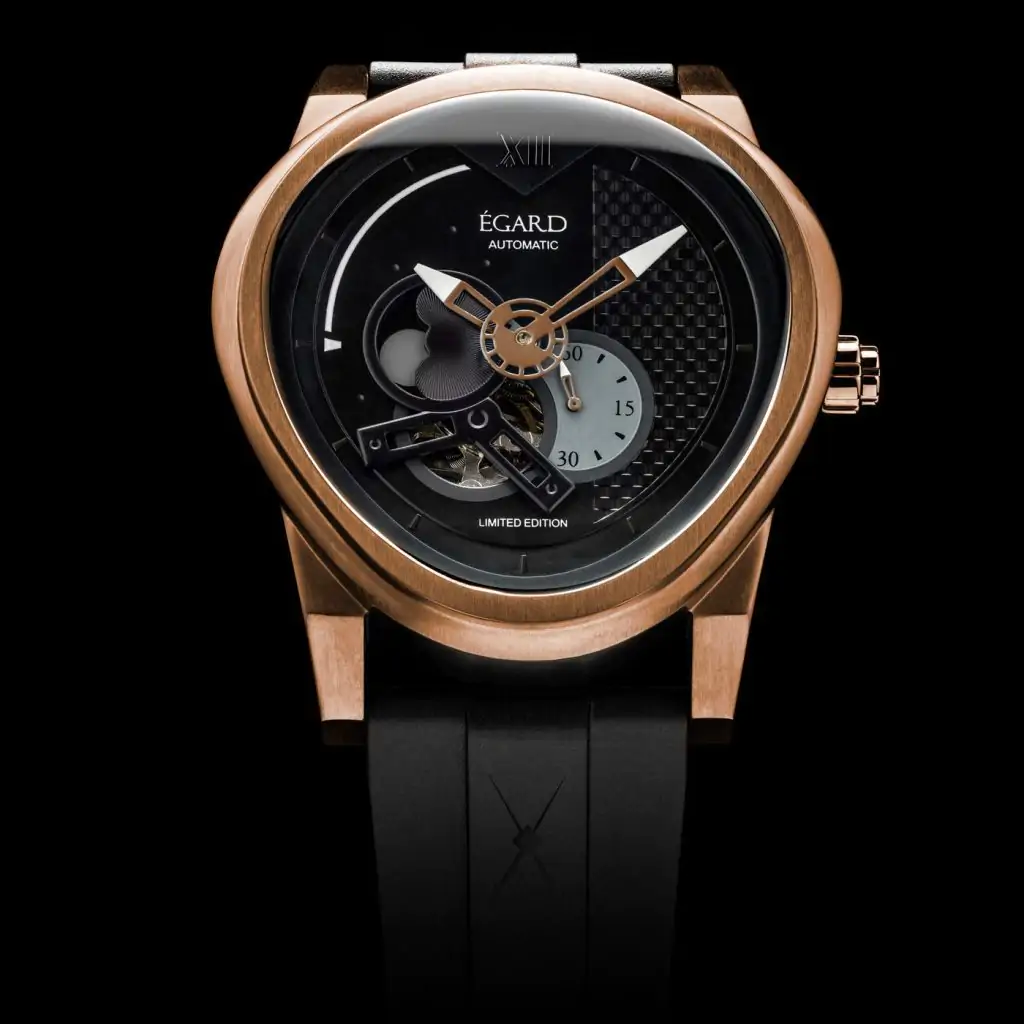
was incredibly difficult to make because the iron in the meteor was affecting the mechanical movement of the watch. Also, I made a sapphire crystal that had never been done before in that shape. The end piece is brilliant, but it all ties back to an important concept which applies to anything in life; an end goal is only achieved one step at a time.
When it comes to working with celebrities’ people sometimes comment, ‘oh wow you are so lucky!’ It is not luck at all. It is the iceberg metaphor, people only see the tip of all the work that went into arranging the celebrity. I’ve literally contacted 5000 people, followed up, was consistent and heard no some many times that I have lost count. It doesn’t matter how many no’s you get, there will be the one yes and you have to be determined and persistent to get it.
While we are on the topic, I have another 5,000 calls to make because I would like to work with another famous Canadian, Jordan Peterson.
What makes you tick?
I have always wanted to do something unique. I never wanted to just have my life pass by and never have something to look back on. So, I decided to go for it. On our website is a video about our watches and company https://www.youtube.com/watch?v=5RrF5rlmghY. In it, I speak about the concept of life and death. I never wanted to be on a final stage of my life and feel like there was something that I needed to do but didn’t. It is the same concept Gary Vaynerchuk always stresses, that regret is poison.
I only undertake projects that I am passionate about and put a hundred percent of myself into them. I have walked away from very good jobs to do things that didn’t pay me any money because I believed in them. Watches being one of those projects. I learned to separate the societal definition of happiness and replace it with my own definition. I feel this is far more functional for me.
I think a majority of people actually believe that success and happiness are synonymous. When in fact they exist Independence of each other. There are many people who on the surface seem successful but are very unhappy. They can’t separate the two psychologically. They depend on their success in order to be happy and often times end up unfulfilled in life.
Whereas, I decided at a young age that my goal was going to be happiness and separated it from success. The concept of one life and we are all going to die. Another theme Gary Vaynerchuk always stresses. Don’t get me wrong though. It’s not like I don’t want to be successful. The differentiator for me is that success means being consistent in my life. If I am going to go into something, I’m going to do it properly. I can never guarantee the outcome but it encourages me to do unique things.
Sometimes this drive can be good, and sometimes it can be bad. It’s a round wire because in the process there are so many obstacles, failures, and people’s judgments. However, it is an authentic path that leads to growth. A meaningful life is where you fail forward, follow your internal compass and persevere. There is a saying, “10 years’ experience or 1-year of the same experience for 10 years.” This is a choice we all have to make for the kind of life we want to lead.
Have you encountered when people say to you that what you are doing is crazy and not practical?
People always tell me the things I do are crazy. When I was designing my watches, people were saying, ‘it’s such a crazy type of watch and starting a watch company is a crazy idea. ‘People have called me crazy for going into acting which by the way went very well for me too.
There are the people who limit themselves. If you have a wonderful idea and go all in on it, you are still going to be happier at the end of the day regardless of the outcome. The key though, if the process of going for it is not enough for you then don’t do it. If you’re only in it for an end result, it’s probably not a good idea.
Comment on failing and coming back from it.
I’ve failed many times in my life. There are many watches we released that just didn’t go over well. Similarly, there were times in my acting career that were very tough. However, I would say the hardest thing that I’ve ever had to overcome was being diagnosed with auto immune disease. The disease caused me to get migraines, twitching muscles, damage to my spine and everything became just terrible. It wasn’t necessarily a failure, but it was difficult for me to work. Normally, I would put in 12-13 hours a day for work. With the pain, I couldn’t do that. You kind of get to a point where you are broken. How do you build yourself back up from those places?
I knew that to get my body to work again that I had to start by going one day at a time. To focus on one area and work my way back up. Hence, I started with my legs and not walk with a limp. I didn’t worry about anything else other than that one goal, no matter how long it took. When that goal was achieved, I worried about the next goal.
Perhaps, those darkest places in life are the greatest gift. If you can overcome them then any small challenges and other failures are a walk in the park.
Thus, from my experience, the way to overcome failure, or overcome adversity is not to look at the end goal but rather the day, or the immediate task in front of you, one step at a time. That’s the biggest mistake people make in life. When you try to do something, if you look at the end goal, then often times it seems insurmountable.
What are you working on now?
I am working on a very cool man’s watch. It is a technical, kind of military-like watch. I want this watch to really symbolize the positive in masculinity. With the Gillette add recently attacking masculinity, and society as a whole berating man, I think this watch sends a very important message. I want to uplift, inspire and show men that there are a lot of positive messages for them out there.
The second watch I am working on is a prototype. It is quite remarkable, but not connected to any theme or concept. I have been working on this piece for years. It was extremely difficult to make.
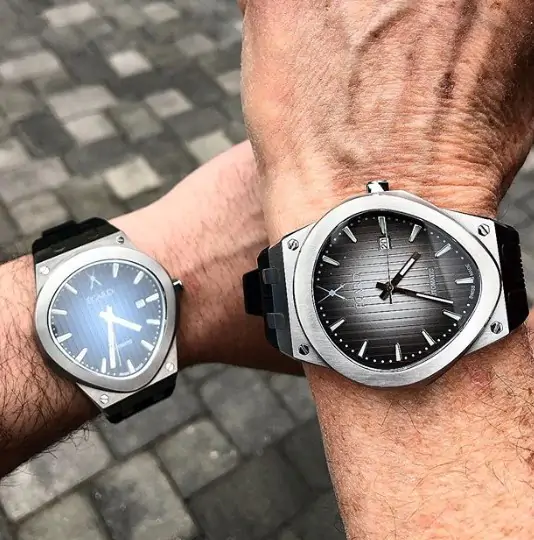
Talk about your campaign to counter the message companies like Gillette are making and your decision to go on Fox news and speak about your campaign to raise awareness.
The new Gillette campaign, conveys a generalized message toward masculinity that I don’t find will create a positive affect long term. Companies pandering and amplifying other messages in society along the lines of, ‘oh, men shouldn’t have an opinion on this subject, because they are men.’ is not a rational way to create progress or any kind of a viable future. There has to be a debate and a dialogue. It is wrong to shut up half of the population and expect progress through it.
The goal of the campaign and my interview on Fox was really to tell other companies that we need more positive messages for men. There is no benefit to calling masculinity toxic. On the contrary, most men are hardworking, wonderful, trying to do their best for their families, wives, kids, and their communities.
It is wrong to classify what is inherently biological gender and masculinity, as something toxic. Nor would I ever agree with that term for femininity. I think femininity is beautiful as well, and if I saw the same message for women, I would fight it until the day I die. I don’t agree with a lot of messaging that I see nowadays in general. I just got tired of it and thought I should do something about it. Hopefully, more companies follow suit and reinforce positive messages for both males and females alike.
Why is it important to dress well in the business world?
The main reason it is important is that when you are doing a transaction with someone and whether it is justifiable or not, you base it on a certain degree of trust. Let’s say you have a watch store and I want to show my line and what it represents. If I come in and I am not dressed nice, wrinkled clothes, not fitting etc., then that is a representation of my product. I am an extension of my product. There are a lot of people who say, ‘I should be able to dress the way I want.’ Yes, you can and you should, but you cannot force other people to have the reaction you want. In other words, if they choose not to engage in business with you based on your choice of how you present yourself, then you cannot claim to be a victim.
I always have a choice to put my best foot forward. Whomever I am doing business with will see that as a reflection of my commitment, my product, and my ability to be ethical of the work I have put in. How I present myself, what clothes I put on, what tone I speak with, are all relevant in every and each aspect in my life.
This transcends business too. It applies when you meet people socially. People are engaging with us in public or anywhere. Subconsciously or consciously they are analyzing you. Whether you care or not it is happening.
For business, I tend not to care what people think about me. However, I do care about representing my product properly and my business properly. I won’t dress up messy to go out and eat with my parents. I want to show them respect and make sure that people around them in the restaurant or any other setting also treat them with respect. In a sense too, I came to that particular restaurant means I have respect for the restaurant. I respect my family by taking them there. Thus, putting your best foot forward is a habit, I’d say one you can add to Stephen R. Covey famous book, the 7 Habits of Highly Effective People.
Interview transcribed by Evgenia Stroganova.
